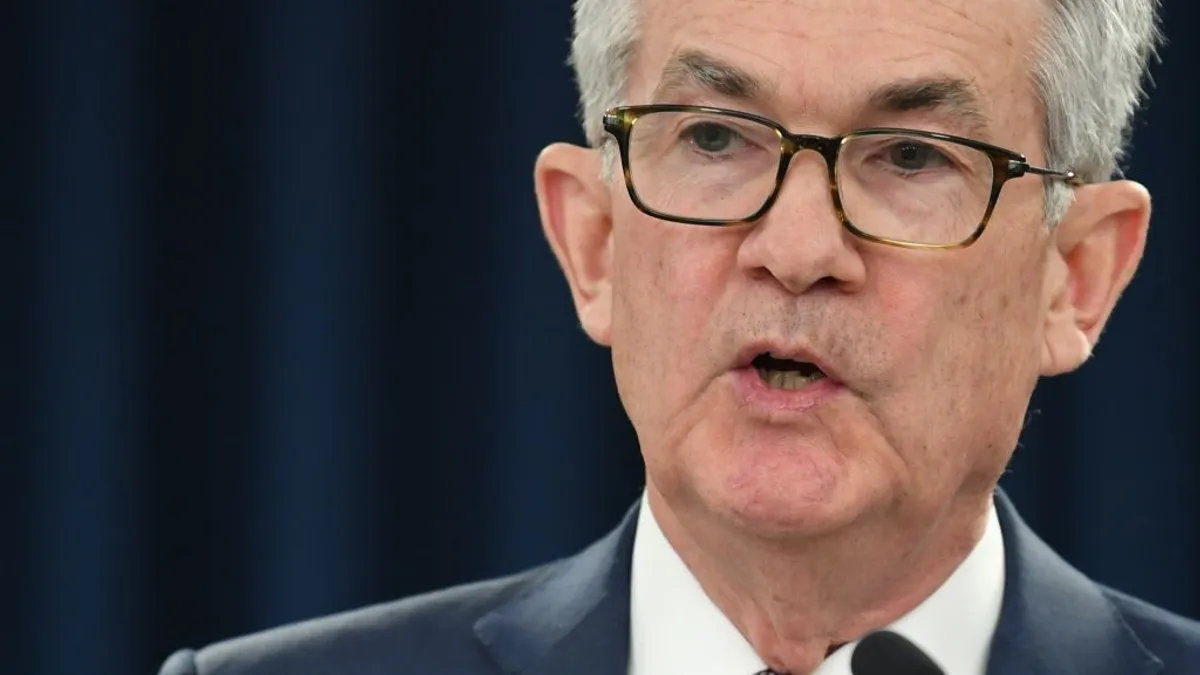Dive Brief:
- The Federal Reserve Wednesday held the main interest rate between 5.25% and 5.5%, noting little recent progress in its two-year fight to beat back inflation.
- Policymakers reiterated their need to gain greater confidence that inflation is falling at a sustainable pace before beginning to trim the federal funds rate from a 23-year high.
- “So far this year the data have not given us that greater confidence,” Fed Chair Jerome Powell said during a press conference after a two-day policy meeting. “It is likely that gaining such greater confidence will take longer than previously expected.”
Dive Insight:
Despite stubborn price pressures, the central bank will probably not raise the benchmark interest rate, Powell predicted.
“I think it’s unlikely that the next policy rate move will be a hike,” he said. The Fed instead is focused on “how long to keep policy restrictive.”
The current level of monetary policy tightening is sufficient to slow the economy and ease inflation, Powell said, citing several factors such as declining demand for labor, falling spending on housing, and the decreasing rates of hiring and quits.
“I do think it’s clear that policy is restrictive — sufficiently restrictive,” he said, while noting that he is less confident than earlier this year in the likely pace of declining price pressures during 2024.
“My expectation is that we will, over the course of this year, see inflation move back down,” Powell said, while noting “my confidence in that is lower than it was because of the data that we've seen.”
Powell during much of the past two years said that curbing inflation would probably require slower economic growth and a softening in the labor market.
Recently, the economy has followed Powell’s script — to an extent.
The pace of economic growth during the first quarter declined to 1.6% from 3.4% during Q4. Also, job openings shrunk in March to the lowest level since 2021, the Bureau of Labor Statistics indicated Wednesday in its Job Openings and Labor Turnover Survey.
Yet the labor market and economy are far from floundering. Unemployment in March was 3.8% — unusually low — and the Atlanta Fed estimates that growth in gross domestic product will speed up to 3.3% during Q2.
“Clearly, restrictive monetary policy needs more time to do its job,” Powell said.
Policymakers, in their most aggressive tightening in four decades, have slowed inflation from 9.1% in June 2022 but failed in recent months to make progress in the “last mile” of restoring price pressures to 2%.
Fed officials in March forecast in a median projection that the central bank would trim the main rate in three, quarter-point increments in 2024. Since then, data has revealed a stubborn inflationary trend this year in prices paid by both consumers and producers.
Wage growth increased 1.2% during the first three months of 2024 compared with the prior three months, when employee compensation rose just 0.9%, the Bureau of Labor Statistics said Tuesday. Over a 12-month period, the employment cost index rose 4.2%.
Also, the Fed’s preferred inflation gauge — the core personal consumption expenditures price index excluding food and energy — increased 3.7% last quarter on an annualized basis, the Commerce Department said last week.
“If we did have a path where inflation proves more persistent than expected and where the labor market remains strong but inflation is moving sideways and we're not gaining greater confidence, well, that would be a case in which it could be appropriate to hold off on rate cuts,” Powell said.
The policy-setting Federal Open Market Committee decided to slow the decrease in the Fed’s $7.4 trillion balance sheet. Beginning in June, the central bank will trim the monthly roll-off of its holdings in Treasurys to $25 billion from $60 billion.
The slowing of so-called quantitative tightening is aimed at reducing the risk of financial instability as the Fed trims its asset portfolio, Powell said.
Editor’s note: This story has been updated to include comments by Fed Chair Jerome Powell during a press conference Wednesday.












